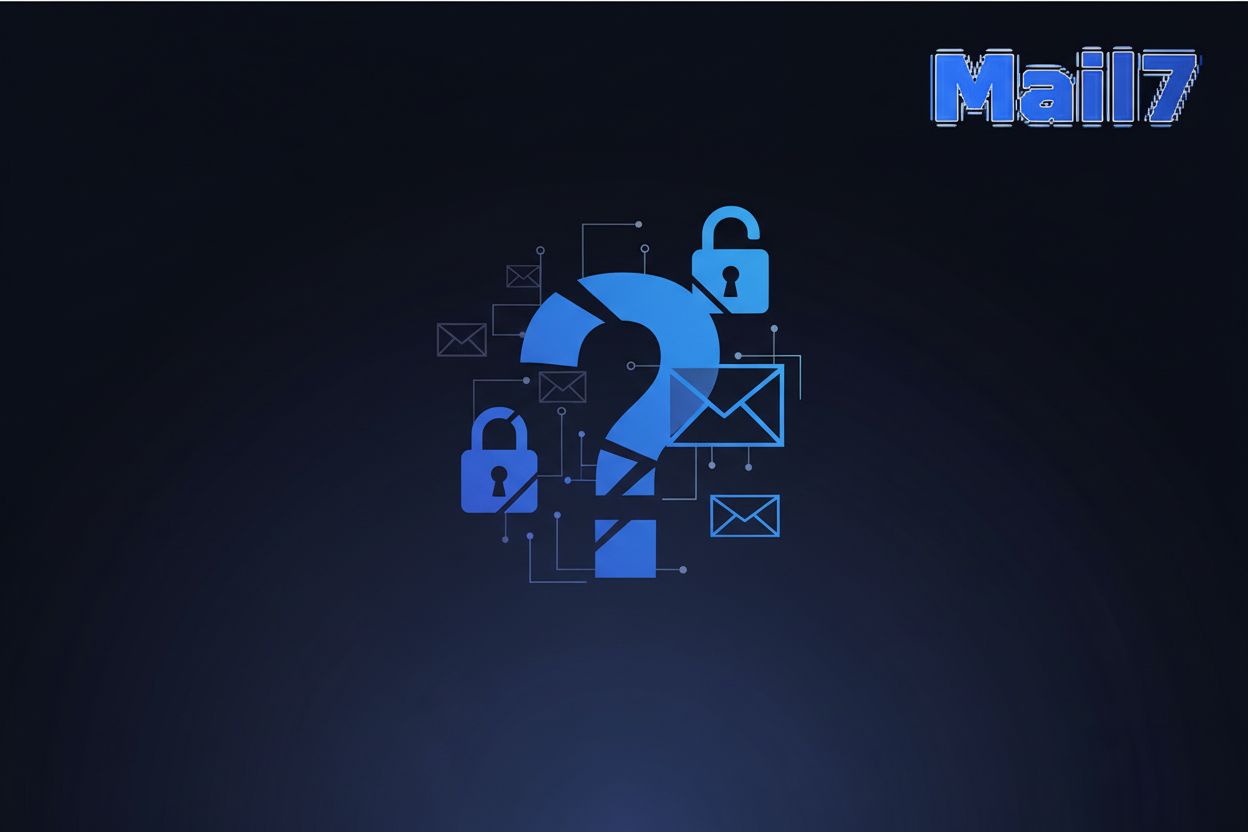Email Spam Legislation Worldwide
TL;DR
Understanding the Global Spam Landscape: Why Developers Need to Know
Okay, so you're building email systems and think spam laws are just for marketers? Think again!
Turns out, as developers, we're kinda on the front lines when it comes to dodging spam law violations, especially 'cause different countries got different rules. Like, did you know that Canada's Anti-Spam Legislation (CASL) can fine businesses up to CA$10 million (Anti-Spam Legislation - Dentons), according to Canada's anti-spam legislation? That's a lotta maple syrup!
- Explicit Consent: Many countries like those in EU, require explicit opt-in consent. This means users gotta actively agree to receive emails.
- Accurate Headers: The CAN-SPAM Act in the US, as mentioned in the FTC’s Compliance Guide For Business means we can't be sneaky with "From", "To", or "Reply-to" lines in emails.
- Easy Unsubscribe: Making it easy for peeps to bail out of the email list is key, or else.
So, understanding these regional laws is the first step for developers. Next up, we'll break down North America's approach.
North American Anti-Spam Laws: A Detailed Breakdown
Alright, so you're diving into the nitty-gritty of anti-spam laws in North America? Turns out, it's not just about avoiding annoying emails; it's about serious legal stuff that can hit your wallet hard, though sometimes it feels like nobody actually enforces it.
The CAN-SPAM Act in the United States is kinda unique. Unlike many other places, it mainly uses an opt-out approach. Basically, you can send commercial emails without prior consent, but you gotta follow some rules.
- Make sure you're honest about who you are and where you're located. No fake headers or misleading subject lines allowed.
- Include a physical address. It shows you're legit.
- Have an easy way for people to unsubscribe. Process those requests within 10 business days.
If you screw up, you could be looking at some serious fines—up to $51,744 per email, according to MailerLite for each violation. Ouch.
Canada, on the other hand, is way stricter. Their CASL (Canada's Anti-Spam Legislation) requires explicit opt-in consent. That means people have to actively agree to receive your emails before you send them anything commercial. As chamaileon.io says, it's a "well-thought-out and rather rigorous approach".
- You gotta get their express or implied consent. Under CASL, implied consent can arise from an existing business relationship, but it's best to aim for explicit consent whenever possible.
- Be crystal clear about who you are and how to contact you.
- Make unsubscribing simple and quick.
And the penalties? They're not playing around. Individuals can be fined up to CA$1 million, and businesses can get hit with fines up to CA$10 million, according to Canada's anti-spam legislation.
So yeah, when it comes to spam laws in North America, the US and Canada have pretty different approaches. Now, let's see how these laws affect developers and what we can do to stay compliant.
Europe's GDPR and Email Marketing: A Deep Dive
Okay, ever get that slightly panicky feeling when you realize your email campaign might be breaking some obscure law in a country you barely know exists? Yeah, me too. Let's dive into Europe's GDPR and how it messes with email marketing – but in a good, "we're staying out of jail" kind of way.
GDPR, or the General Data Protection Regulation, is basically the EU's way of saying, "hey, companies, stop messing around with people's personal info without asking." It's not just about spam; it's about the whole data privacy thing.
And it's not just for companies in the EU. If you're emailing anyone in the EU, you gotta play by their rules. One key principle is explicit consent. You can't just assume it's okay to send emails because someone downloaded a whitepaper. They have to actually say, "yes, I want these emails."
Building an email system that respects GDPR isn't just about slapping a checkbox on a form. It's about building that respect into the system.
- Data Protection Impact Assessments (DPIA): These are basically risk assessments for data privacy. If you're processing a lot of personal data, especially in ways that could be risky, you need to do a DPIA. For example, if you're designing an email marketing platform that collects and stores user email addresses and engagement data, a DPIA would help you assess the risks of potential data breaches, unauthorized access, or misuse of this data, and outline measures to mitigate those risks.
- Managing Data Breaches: Data breaches happen—it’s a fact. You need to have a plan for how to handle them – and fast. The GDPR requires you to notify the relevant authorities within 72 hours of discovering a breach that's likely to "result in a risk for the rights and freedoms of individuals." That’s not a lot of time to waste, so you need to be on top of it.
The diagram below outlines the key steps:
All this can make your head spin, right? Understanding these regional laws is crucial for overall compliance. Next up, we'll explore Asian spam regulations.
Asian Spam Regulations: Navigating Diverse Laws
Asia's a big place, and when it comes to spam laws, things get pretty wild, pretty fast. It's not a one-size-fits-all kinda deal, which can be a total headache for developers trying to build email systems that don't land their clients in hot water.
China's got the "Regulations on Internet Email Services", and they're serious about verifiable permission. You can't just assume it's okay to send emails; you need proof people actually want 'em. Plus, watch what you say! Subject lines need to be squeaky clean of anything dodgy, and the content better not ruffle any feathers with the government. This often means avoiding politically sensitive topics, content that incites illegal activities, or hate speech.
Fines can go from CNY 10,000 to CNY 30,000 per individual email according to Email spam legislation by country source, if you break the law.
Japan's "Act on the Regulation of Transmission of Specified Electronic Mail" is all about honesty. Falsifying sender info? Big no-no. They want opt-in consent and expect you to play nice if you've got a business relationship with someone.
India doesn't have a specific spam law per se, but their "Digital Personal Data Protection Act (DPDP)" puts the onus on data protection. Messing up security safeguards can lead to big penalties, but there's a lot of gray area about what "spam" even means.
Navigating these diverse laws is tricky. Next, we'll look at other regions' key legislations.
Other Regions: Key Legislations to Consider
Alright, so you're expanding your email reach globally? Cool, but hold up—spam laws vary wildly. Don't get caught out!
Here's a quick peek at a few more regions:
Australia: Their Spam Act 2003 demands explicit consent. Plus, avoid address-harvesting—it's a big no-no down under. Breaching this act can lead to fines of up to AU$1.1 million daily for repeated violations, as said by MailerLite. The basis for these fines is typically per contravention.
Brazil: The Lei Geral de Proteção de Dados (LGPD) requires explicit consent too. Data subjects have rights, and non-compliance can sting, potentially costing 2% of turnover in Brazil, capped at R$50 million per infraction.
The following section will outline practical steps developers can take to avoid fines.
Best Practices for Developers: Building Compliant Email Systems
Alright, so you're building this email system and wanna stay outta trouble? It's not just about slapping together some code; you gotta think about the legal stuff, too. Turns out, it ain't rocket science!
- Opt-in is key: Make sure users actually agree to get those emails. None of that pre-checked box nonsense. This is the foundation for most global compliance.
- Easy unsubscribes: Gotta have a clear way for folks to bail, and you better honor it quick. For CAN-SPAM, this means within 10 business days.
- Be upfront: No sneaky headers or fake "from" addresses, gotta be honest. This applies across most regulations.
- Data Minimization: Only collect the email addresses and related data you absolutely need.
- Secure Storage: Implement robust security measures to protect the data you collect.
- Clear Privacy Policy: Ensure your system links to a clear and accessible privacy policy.
The fines for violations can vary significantly. For instance, CAN-SPAM can result in fines of up to $51,744 per email, while CASL can reach CA$10 million for businesses. Understanding the potential financial impact is crucial.
The following section will outline practical steps developers can take to avoid fines.
Best Practices for Developers: Building Compliant Email Systems
Alright, so you're building this email system and wanna stay outta trouble? It's not just about slapping together some code; you gotta think about the legal stuff, too. Turns out, it ain't rocket science!
- Opt-in is key: Make sure users actually agree to get those emails. None of that pre-checked box nonsense. This is the foundation for most global compliance.
- Easy unsubscribes: Gotta have a clear way for folks to bail, and you better honor it quick. For CAN-SPAM, this means within 10 business days.
- Be upfront: No sneaky headers or fake "from" addresses, gotta be honest. This applies across most regulations.
- Data Minimization: Only collect the email addresses and related data you absolutely need.
- Secure Storage: Implement robust security measures to protect the data you collect.
- Clear Privacy Policy: Ensure your system links to a clear and accessible privacy policy.
The fines for violations can vary significantly. For instance, CAN-SPAM can result in fines of up to $51,744 per email, while CASL can reach CA$10 million for businesses. Understanding the potential financial impact is crucial.
The following section will outline practical steps developers can take to avoid fines.
Future Trends in Email Spam Legislation
Okay, so what's next for spam laws? It's kinda like asking what's next for the weather, right? Always changing, and sometimes totally unpredictable.
- ai and machine learning are gonna be huge in spam detection. Imagine ai sifting through emails faster than you can say "unsubscribe," learning patterns, and blocking spam before it even hits your inbox. The downside? Spammers will likely start using ai to create even sneakier spam.
- Blockchain's showing promise for verifying sender identities, which could make spoofing way harder. Think of it like a digital fingerprint for your email. This tech could prevent phishing attacks and other email scams.
- Keep an eye on data privacy laws, too. They're not just about spam, but they def impact how you collect and use email addresses. As laws like gdpr continues to evolve, it will be important to stay updated.
Staying ahead is the only way to win.





